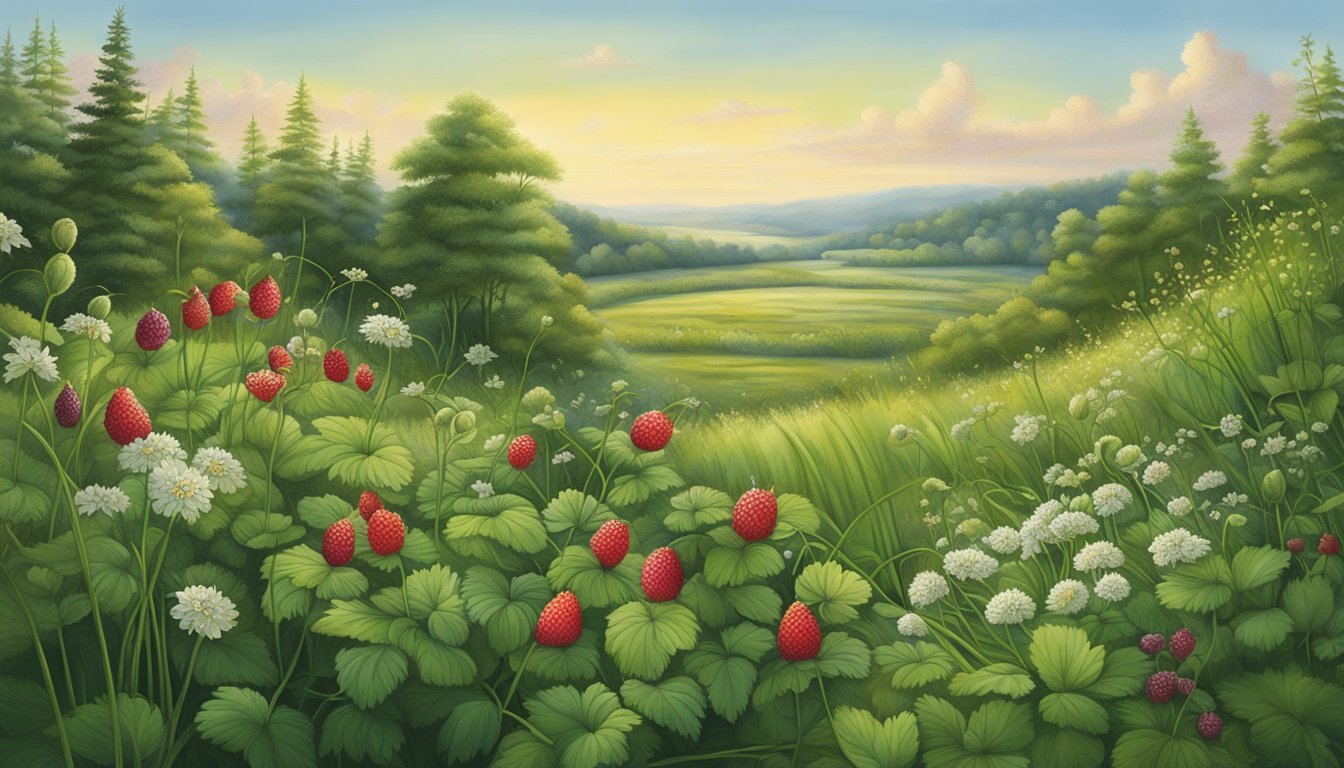

Illinois boasts a rich diversity of native flora that provides a bounty of edible plants, many of which have been part of indigenous diets for centuries. These plants, which can often be found in forests, prairies, and wetlands across the state, range from well-known fruits and nuts (how long do nuts last?) to less recognized leaves and roots. Foraging for these natural resources not only connects individuals to the land but also offers a sustainable way to appreciate the state's natural heritage.
Among the variety of native edible plants in Illinois, some such as the pawpaw (Asimina triloba) and the persimmon (Diospyros virginiana) produce fruits that are highly sought after for their unique flavors and nutritional value. Nuts like the black walnut (Juglans nigra) and the pecan (Carya illinoinensis) also grow in the state, providing rich sources of protein and healthy fats. These species reflect just a portion of the state’s extensive selection of edible plants.
Foraging in Illinois requires careful identification to ensure the plants are indeed edible and not harmful. Enthusiasts must also be mindful of sustainable practices to preserve these wild populations. Foraging is not merely a search for food; it is a way to deepen one’s understanding of the natural world and the complex ecosystems that sustain these native species. Through responsible foraging, Illinoisans can discover a wealth of nutritious and delicious plants right in their own backyards.
Illinois' diverse landscapes, from the Shawnee National Forest to the Prairie State, offer excellent opportunities for mushroom hunting. The state boasts a variety of edible species, including morels, chanterelles, and hen of the woods. With proper identification skills and respect for public and private land regulations, foraging in Illinois promises a rewarding adventure.
Native edible plants in Illinois play a crucial role in the sustainability of local ecosystems and hold significant historical heritage. They provide essential resources for local wildlife and offer unique flavors and nutrition to foragers.
Illinois native plants are integral to the health of various ecosystems as they provide food and habitat for pollinators, insects, and birds. These plants are often better adapted to local climates and soil conditions than non-native species, requiring fewer resources like water and fertilizer to thrive.
Many edible plants native to Illinois have a rich heritage of use by Indigenous peoples and early settlers. These plants not only served as food sources but also played a role in medicinal and cultural practices, weaving an important historical narrative into the wilderness of Illinois.
When foraging for native edible plants, identifying the correct species is paramount to safety and environmental respect. Foragers should:
Invasive species pose a threat to native plant populations by competing for resources and space. This pressure can lead to a decline in native edible plants, impacting the overall ecosystem and reducing biodiversity, which affects the food sources for local pollinators and wildlife.
Creating an edible landscape requires thoughtful planning and understanding of the local ecosystem to incorporate Illinois native plants in a home garden. It revolves around soil health, strategic plant placement, and the selection of species that not only thrive in local conditions but also contribute to biodiversity and sustainable gardening.
The foundation of a successful edible landscape is healthy soil. Before planting, test the soil to determine its pH level and nutrient composition. The ideal pH for most edible plants ranges from 6.0 to 7.0, although some native edibles may prefer slightly different conditions. Amend the soil with organic matter like compost to improve fertility and structure.
Soil Property Desired Condition pH Level 6.0 - 7.0 Nutrients High in organic matter Texture Well-draining
Garden layout is crucial for accessibility and maximizing plant health. Position plants to take advantage of full sun, where needed, and shaded areas for those that require less intense light. Design paths between rows to facilitate easy maintenance. Perennial plants can be placed at the garden's edge as they will remain year to year.
Sun Requirements Plant Placement Full Sun Center positions, south-facing slopes Partial Sun East or west side of taller plants Shade Under trees, north side of structures
Choose a variety of Illinois native plants that offer a range of edible fruits, leaves, or roots. Consider perennial plants like pawpaw (Asimina triloba) and wild ginger (Asarum canadense) for long-term yield. Favor plants that not only satisfy dietary preferences but also support local wildlife.
Plant Type Examples Fruit Pawpaw, serviceberry Leafy Greens Wild ginger, dandelion Roots Jerusalem artichoke
Incorporate eco-friendly practices to minimize the use of pesticides and reduce water waste. Mulching can retain soil moisture and suppress weeds. Embrace horticulture methods that protect the environment, such as companion planting and natural pest control, to maintain a balanced ecosystem within the garden.
Practice Benefit Mulching Retains moisture, suppress weeds Companion Planting Enhances growth, deters pests Natural Pest Control Reduces pesticide use